- HOME
-
PRODUCTS
Extraction Distillation Equipment Reactor Rotary Evaporator Bioreactor Fermenter Freeze Dryer Spray Dryer Steam Sterilizer Centrifuge Lab Furnace Drying Oven Incubator Low Temperature Freezer Laboratory Equipment Life Science Instrument Drug Testing Instrument Food Testing Instrument Analytical Instrument Petroleum Testing Equipment Water Analysis Instrument
- SOLUTION
- NEWS
- SUPPORT
- VIDEOS
- ABOUT
- CONTACT
HOME>Application
We put ourselves in the shoes of you, no matter you work in laboratory, medical, research institution, pharmaceutical, food and beverages, petrochemical, environment, biotechnology industries, etc. LABOAO experienced team always works closely with you, propose more economical and practical solution to meet your real needs.
-

Biopharmaceuticals
-
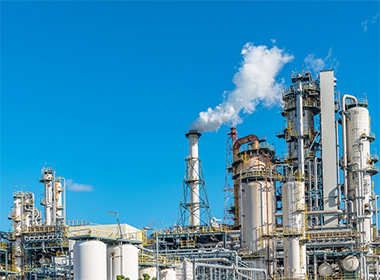
Petrochemicals
-
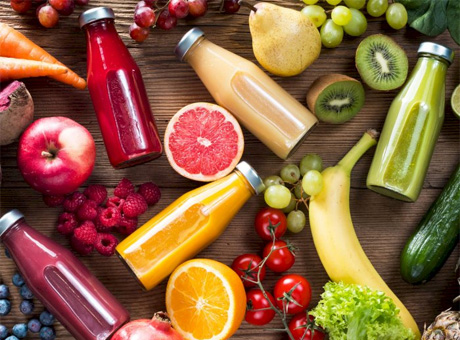
Food Beverage
-
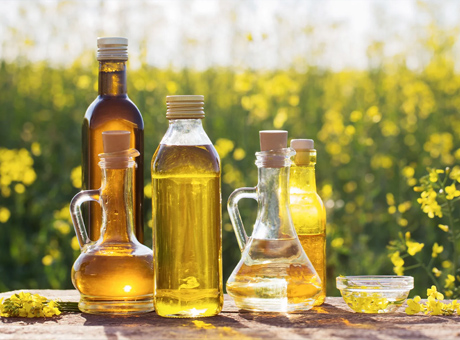
Plant Agriculture
-
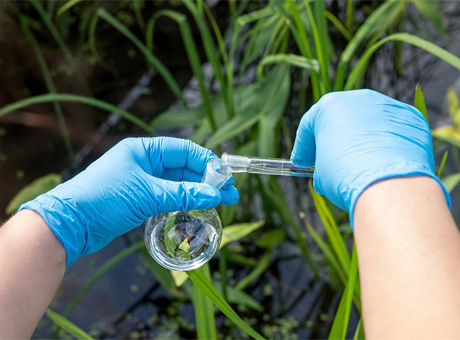
Environmental Analysis
-
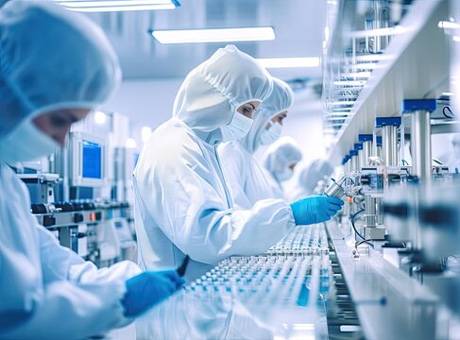
Medical Research
-
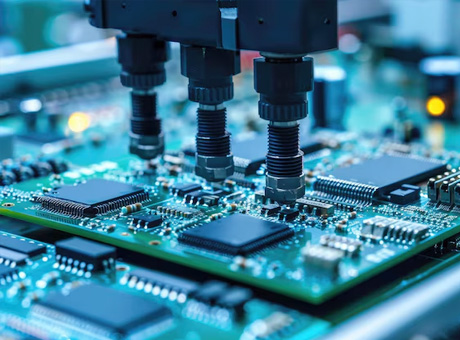
Industrial Electronics
-

New Materials New Energy
Product Application Filed
- Reactor
- Rotary Evaporator
- Bioreactor Fermenter
- Freeze Dryer
- Spray Dryer
- Steam Sterilizer
- Centrifuge
- Lab Furnace
- Drying Oven
- Low Temperature Freezer
- Spectrophotometer
- Incubator Shaker
- Raman Spectrometer
- X-Ray Fluorescence Spectrometer(XRF)
-
 Chemical SynthesisEsterification - Glass reactors are used for synthesizing esters, which find applications in perfumes, flavors, and pharmaceuticals. Hydrogenation - They facilitate hydrogenation reactions, such as the reduction of unsaturated compounds to saturated ones. Condensation - Glass reactors aid in condensation reactions to form new compounds, such as the formation of amides or ester linkages.
Chemical SynthesisEsterification - Glass reactors are used for synthesizing esters, which find applications in perfumes, flavors, and pharmaceuticals. Hydrogenation - They facilitate hydrogenation reactions, such as the reduction of unsaturated compounds to saturated ones. Condensation - Glass reactors aid in condensation reactions to form new compounds, such as the formation of amides or ester linkages. -
 Pharmaceutical ProductionAPI Synthesis - Glass reactors are employed in the synthesis of Active Pharmaceutical Ingredients (APIs) for drug production. Crystallization - They enable controlled crystallization of pharmaceutical compounds to obtain pure and well-defined crystals. Drug Formulation - Glass reactors are used in the formulation and optimization of drug delivery systems, such as liposomes or nanoparticles.
Pharmaceutical ProductionAPI Synthesis - Glass reactors are employed in the synthesis of Active Pharmaceutical Ingredients (APIs) for drug production. Crystallization - They enable controlled crystallization of pharmaceutical compounds to obtain pure and well-defined crystals. Drug Formulation - Glass reactors are used in the formulation and optimization of drug delivery systems, such as liposomes or nanoparticles. -
 Petrochemical IndustryCatalytic Reactions - Glass reactors facilitate catalytic reactions, including those involved in petroleum refining and production of chemicals. Distillation - They are used in distillation processes for separating and purifying different components of petroleum products.
Petrochemical IndustryCatalytic Reactions - Glass reactors facilitate catalytic reactions, including those involved in petroleum refining and production of chemicals. Distillation - They are used in distillation processes for separating and purifying different components of petroleum products. -
 Material ScienceNanomaterial Synthesis - Glass reactors aid in the synthesis of nanoparticles, nanotubes, and other nanomaterials with precise control over their properties. Sol-Gel Processes - They are utilized in sol-gel processes to create materials with controlled porosity and composition, such as thin films or coatings.
Material ScienceNanomaterial Synthesis - Glass reactors aid in the synthesis of nanoparticles, nanotubes, and other nanomaterials with precise control over their properties. Sol-Gel Processes - They are utilized in sol-gel processes to create materials with controlled porosity and composition, such as thin films or coatings. -
 Material ScienceFermentation - Glass reactors are used in the fermentation process for the production of alcoholic beverages, yogurt, and other fermented food products. Flavor and Fragrance Extraction - They facilitate the extraction of flavors and fragrances from natural sources using solvents and distillation techniques.
Material ScienceFermentation - Glass reactors are used in the fermentation process for the production of alcoholic beverages, yogurt, and other fermented food products. Flavor and Fragrance Extraction - They facilitate the extraction of flavors and fragrances from natural sources using solvents and distillation techniques. -
 Food and Beverage IndustryWater and Wastewater Treatment - Glass reactors aid in studying and optimizing water treatment processes, such as oxidation, disinfection, or removal of pollutants. Air Pollution Monitoring - They are utilized in environmental research to simulate atmospheric conditions and analyze air pollutants.
Food and Beverage IndustryWater and Wastewater Treatment - Glass reactors aid in studying and optimizing water treatment processes, such as oxidation, disinfection, or removal of pollutants. Air Pollution Monitoring - They are utilized in environmental research to simulate atmospheric conditions and analyze air pollutants. -
 Environmental AnalysisChemical Kinetics - Glass reactors enable the study of reaction rates, mechanisms, and kinetic parameters for various chemical systems. Photocatalysis - They are used to investigate photocatalytic reactions, such as the degradation of pollutants using light and catalysts.
Environmental AnalysisChemical Kinetics - Glass reactors enable the study of reaction rates, mechanisms, and kinetic parameters for various chemical systems. Photocatalysis - They are used to investigate photocatalytic reactions, such as the degradation of pollutants using light and catalysts. -
 Academic ResearchBioreactor Systems - Glass reactors with suitable accessories are employed in bioreactor systems for cell culture, fermentation, and bioprocessing. Enzyme Immobilization - They aid in the immobilization of enzymes for various applications, such as biocatalysis or biosensors.
Academic ResearchBioreactor Systems - Glass reactors with suitable accessories are employed in bioreactor systems for cell culture, fermentation, and bioprocessing. Enzyme Immobilization - They aid in the immobilization of enzymes for various applications, such as biocatalysis or biosensors.
-
 Chemical LaboratoriesSolvent Recovery - Rotary evaporators are used for recovering solvents from reaction mixtures, enabling their reuse and reducing waste. Concentration of Solutions - They aid in concentrating solutions by evaporating the solvent, leading to higher concentrations of desired compounds.
Chemical LaboratoriesSolvent Recovery - Rotary evaporators are used for recovering solvents from reaction mixtures, enabling their reuse and reducing waste. Concentration of Solutions - They aid in concentrating solutions by evaporating the solvent, leading to higher concentrations of desired compounds. -
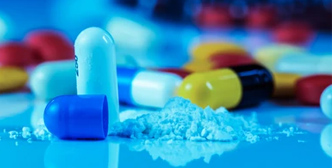 Pharmaceutical IndustryDrug Purification - Rotary evaporators facilitate the purification of drugs by removing residual solvents and impurities. Formulation Development -They aid in the formulation development process by concentrating and evaporating solvents in drug formulations.
Pharmaceutical IndustryDrug Purification - Rotary evaporators facilitate the purification of drugs by removing residual solvents and impurities. Formulation Development -They aid in the formulation development process by concentrating and evaporating solvents in drug formulations. -
 Essential Oil ExtractionAromatherapy - Rotary evaporators are utilized for the extraction of essential oils from aromatic plants for use in aromatherapy or fragrance production. Herbal Medicine - They aid in the extraction of bioactive compounds from medicinal herbs for use in herbal medicine and natural remedies.
Essential Oil ExtractionAromatherapy - Rotary evaporators are utilized for the extraction of essential oils from aromatic plants for use in aromatherapy or fragrance production. Herbal Medicine - They aid in the extraction of bioactive compounds from medicinal herbs for use in herbal medicine and natural remedies. -
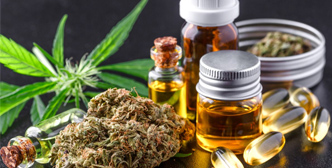 Cannabis IndustryTHC Extraction - Rotary evaporators are used for the extraction and concentration of THC (tetrahydrocannabinol) from cannabis plants for medicinal or recreational use. CBD Isolation - They aid in the isolation and purification of CBD (cannabidiol) from cannabis plants for various therapeutic applications.
Cannabis IndustryTHC Extraction - Rotary evaporators are used for the extraction and concentration of THC (tetrahydrocannabinol) from cannabis plants for medicinal or recreational use. CBD Isolation - They aid in the isolation and purification of CBD (cannabidiol) from cannabis plants for various therapeutic applications. -
 Food and Beverage IndustryFlavor Extraction - Rotary evaporators are used for the extraction of flavors from natural sources, such as fruits or spices, for use in food and beverage products. Beverage Concentration - They aid in the concentration of beverages by evaporating water, resulting in increased flavor intensity.
Food and Beverage IndustryFlavor Extraction - Rotary evaporators are used for the extraction of flavors from natural sources, such as fruits or spices, for use in food and beverage products. Beverage Concentration - They aid in the concentration of beverages by evaporating water, resulting in increased flavor intensity. -
 Environmental AnalysisSample Preparation - Rotary evaporators are utilized in sample preparation for environmental analysis, such as concentrating water samples or extracting pollutants from solid matrices. Oil Spill Analysis - They aid in the concentration and recovery of oil samples from environmental samples for analysis and assessment of oil spills.
Environmental AnalysisSample Preparation - Rotary evaporators are utilized in sample preparation for environmental analysis, such as concentrating water samples or extracting pollutants from solid matrices. Oil Spill Analysis - They aid in the concentration and recovery of oil samples from environmental samples for analysis and assessment of oil spills. -
 Academic ResearchNatural Product Chemistry - Rotary evaporators are employed in the isolation and purification of natural compounds from plants or microorganisms. Synthetic Chemistry - They aid in the concentration of reaction mixtures and the purification of synthetic compounds for further characterization.
Academic ResearchNatural Product Chemistry - Rotary evaporators are employed in the isolation and purification of natural compounds from plants or microorganisms. Synthetic Chemistry - They aid in the concentration of reaction mixtures and the purification of synthetic compounds for further characterization.
-
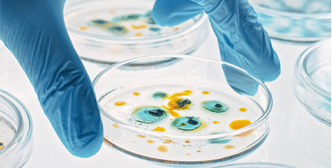 Microbial FermentationIndustrial Enzyme Production - Bioreactor fermenters are used for large-scale cultivation of microorganisms to produce enzymes for industrial applications, such as detergent production or food processing. Antibiotic Production - They aid in the cultivation of antibiotic-producing microorganisms, enabling the large-scale production of antibiotics for medical use.
Microbial FermentationIndustrial Enzyme Production - Bioreactor fermenters are used for large-scale cultivation of microorganisms to produce enzymes for industrial applications, such as detergent production or food processing. Antibiotic Production - They aid in the cultivation of antibiotic-producing microorganisms, enabling the large-scale production of antibiotics for medical use. -
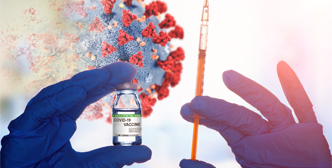 BiopharmaceuticalsRecombinant Protein Production - Bioreactor fermenters facilitate the cultivation of genetically engineered cells to produce therapeutic proteins, such as insulin or monoclonal antibodies. Vaccine Production - They are utilized for the large-scale production of vaccines by growing cells or microorganisms that express vaccine antigens.
BiopharmaceuticalsRecombinant Protein Production - Bioreactor fermenters facilitate the cultivation of genetically engineered cells to produce therapeutic proteins, such as insulin or monoclonal antibodies. Vaccine Production - They are utilized for the large-scale production of vaccines by growing cells or microorganisms that express vaccine antigens. -
 Tissue EngineeringScaffold Seeding - Bioreactor fermenters aid in the seeding of cells onto three-dimensional scaffolds, enabling the growth and development of tissue-engineered constructs for regenerative medicine. Cell Expansion - They facilitate the expansion and proliferation of cells in a controlled environment, necessary for tissue engineering and cell-based therapies.
Tissue EngineeringScaffold Seeding - Bioreactor fermenters aid in the seeding of cells onto three-dimensional scaffolds, enabling the growth and development of tissue-engineered constructs for regenerative medicine. Cell Expansion - They facilitate the expansion and proliferation of cells in a controlled environment, necessary for tissue engineering and cell-based therapies. -
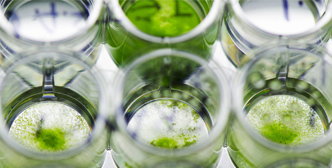 Algal BiotechnologyBiofuel Production - Bioreactor fermenters are used for the cultivation of algae to produce biofuels, such as biodiesel or bioethanol. Nutraceuticals and Bioproducts - They aid in the large-scale cultivation of algae to obtain valuable compounds like omega-3 fatty acids or pigments for use in food, cosmetics, or pharmaceuticals.
Algal BiotechnologyBiofuel Production - Bioreactor fermenters are used for the cultivation of algae to produce biofuels, such as biodiesel or bioethanol. Nutraceuticals and Bioproducts - They aid in the large-scale cultivation of algae to obtain valuable compounds like omega-3 fatty acids or pigments for use in food, cosmetics, or pharmaceuticals. -
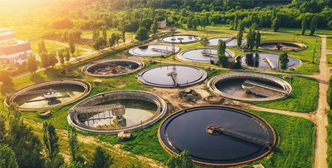 Environmental ApplicationsWastewater Treatment - Bioreactor fermenters facilitate the growth of microorganisms for the biological treatment of wastewater, allowing the removal of pollutants and organic compounds. Bioremediation - They aid in the cultivation of microorganisms capable of degrading or detoxifying environmental pollutants, contributing to the cleanup of contaminated sites.
Environmental ApplicationsWastewater Treatment - Bioreactor fermenters facilitate the growth of microorganisms for the biological treatment of wastewater, allowing the removal of pollutants and organic compounds. Bioremediation - They aid in the cultivation of microorganisms capable of degrading or detoxifying environmental pollutants, contributing to the cleanup of contaminated sites. -
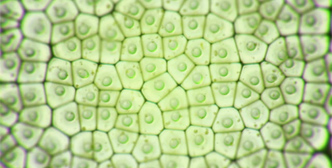 Agricultural BiotechnologyPlant Cell Culture - Bioreactor fermenters are utilized for the large-scale cultivation of plant cells to produce secondary metabolites, such as pharmaceuticals or flavors. Micropropagation - They aid in the rapid multiplication and propagation of plant tissues in a controlled environment for plant breeding or commercial plant production.
Agricultural BiotechnologyPlant Cell Culture - Bioreactor fermenters are utilized for the large-scale cultivation of plant cells to produce secondary metabolites, such as pharmaceuticals or flavors. Micropropagation - They aid in the rapid multiplication and propagation of plant tissues in a controlled environment for plant breeding or commercial plant production. -
 Biofuels and Renewable EnergyBioethanol Production - Bioreactor fermenters are used for the fermentation of biomass-derived sugars to produce bioethanol as an alternative fuel source. Biogas Generation - They aid in the anaerobic fermentation of organic waste to produce biogas, which can be used for heat, electricity, or fuel production.
Biofuels and Renewable EnergyBioethanol Production - Bioreactor fermenters are used for the fermentation of biomass-derived sugars to produce bioethanol as an alternative fuel source. Biogas Generation - They aid in the anaerobic fermentation of organic waste to produce biogas, which can be used for heat, electricity, or fuel production. -
 Food and Beverage IndustryFermented Food Production - Bioreactor fermenters are utilized for large-scale production of fermented foods and beverages, such as yogurt, cheese, beer, or wine. Single-Cell Protein Production - They facilitate the cultivation of microorganisms as a protein source for food and feed applications, offering a sustainable protein alternative.
Food and Beverage IndustryFermented Food Production - Bioreactor fermenters are utilized for large-scale production of fermented foods and beverages, such as yogurt, cheese, beer, or wine. Single-Cell Protein Production - They facilitate the cultivation of microorganisms as a protein source for food and feed applications, offering a sustainable protein alternative.
-
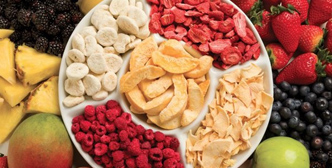 Food IndustryPreservation of Food - Freeze dryers are used to preserve various food products, such as fruits, vegetables, and meals, by removing water while maintaining their nutritional value, taste, and texture. Instant Coffee and Tea - Freeze drying is employed to produce instant coffee and tea, allowing for easy preparation and longer shelf life.
Food IndustryPreservation of Food - Freeze dryers are used to preserve various food products, such as fruits, vegetables, and meals, by removing water while maintaining their nutritional value, taste, and texture. Instant Coffee and Tea - Freeze drying is employed to produce instant coffee and tea, allowing for easy preparation and longer shelf life. -
 Pharmaceutical IndustryDrug Formulation - Freeze dryers are utilized for the development and production of stable pharmaceutical formulations, including injectables, oral tablets, and vaccines. Biologics and Biopharmaceuticals - They aid in the freeze-drying of proteins, enzymes, antibodies, and other biologics to enhance their stability, prolong shelf life, and maintain their therapeutic properties.
Pharmaceutical IndustryDrug Formulation - Freeze dryers are utilized for the development and production of stable pharmaceutical formulations, including injectables, oral tablets, and vaccines. Biologics and Biopharmaceuticals - They aid in the freeze-drying of proteins, enzymes, antibodies, and other biologics to enhance their stability, prolong shelf life, and maintain their therapeutic properties. -
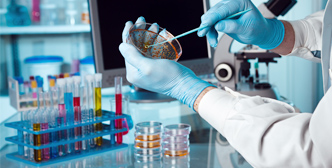 Biotechnology and ResearchPreservation of Biological Samples - Freeze dryers are used for the long-term preservation of biological samples, such as cells, tissues, and microorganisms, while maintaining their viability and functionality. Enzyme Stabilization - They aid in the stabilization of enzymes for various biotechnological applications, such as enzymatic assays, biocatalysis, and diagnostic kits.
Biotechnology and ResearchPreservation of Biological Samples - Freeze dryers are used for the long-term preservation of biological samples, such as cells, tissues, and microorganisms, while maintaining their viability and functionality. Enzyme Stabilization - They aid in the stabilization of enzymes for various biotechnological applications, such as enzymatic assays, biocatalysis, and diagnostic kits. -
 Floral and Herbal IndustryFlower Preservation - Freeze dryers are employed to preserve flowers, maintaining their shape, color, and fragrance for decorative purposes or as keepsakes. Herbal Extracts - They are used to freeze-dry herbal extracts, preserving their active compounds for use in herbal remedies, cosmetics, and aromatherapy products.
Floral and Herbal IndustryFlower Preservation - Freeze dryers are employed to preserve flowers, maintaining their shape, color, and fragrance for decorative purposes or as keepsakes. Herbal Extracts - They are used to freeze-dry herbal extracts, preserving their active compounds for use in herbal remedies, cosmetics, and aromatherapy products.
-
 Food Beverage IndustryPowdered Food Products - Spray dryers are used to transform liquid food ingredients into powdered form, such as powdered milk, coffee, and infant formula. Flavors and Seasonings -They aid in the production of powdered flavors and seasonings used in various food products, including snacks, soups, and sauces.
Food Beverage IndustryPowdered Food Products - Spray dryers are used to transform liquid food ingredients into powdered form, such as powdered milk, coffee, and infant formula. Flavors and Seasonings -They aid in the production of powdered flavors and seasonings used in various food products, including snacks, soups, and sauces. -
 Pharmaceutical IndustryDrug Formulation - Spray dryers are utilized for the production of pharmaceutical powders, such as inhalable dry powders, oral solid dosage forms, and controlled-release formulations. Encapsulation of Active Ingredients - They aid in encapsulating active pharmaceutical ingredients, vitamins, and nutraceuticals for improved stability and targeted delivery.
Pharmaceutical IndustryDrug Formulation - Spray dryers are utilized for the production of pharmaceutical powders, such as inhalable dry powders, oral solid dosage forms, and controlled-release formulations. Encapsulation of Active Ingredients - They aid in encapsulating active pharmaceutical ingredients, vitamins, and nutraceuticals for improved stability and targeted delivery. -
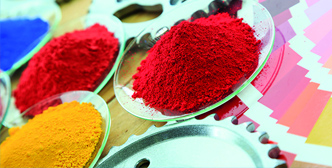 Chemical IndustryCatalyst Production - Spray dryers are used to produce catalysts in powdered form, enabling enhanced surface area and reactivity for various chemical reactions. Dye and Pigment Manufacturing - They aid in the production of powdered dyes and pigments used in industries such as textiles, paints, and coatings.
Chemical IndustryCatalyst Production - Spray dryers are used to produce catalysts in powdered form, enabling enhanced surface area and reactivity for various chemical reactions. Dye and Pigment Manufacturing - They aid in the production of powdered dyes and pigments used in industries such as textiles, paints, and coatings. -
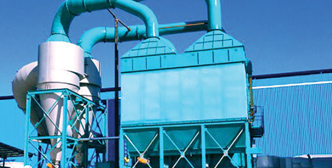 Environmental and Waste ManagementAir Pollution Control - Spray dryers are employed in air pollution control systems to remove pollutants from industrial exhaust gases, converting them into dry particles for easy collection and disposal. Waste Remediation - They aid in the drying and stabilization of waste materials, such as sludge, sewage, and industrial by-products, for safe disposal or reuse.
Environmental and Waste ManagementAir Pollution Control - Spray dryers are employed in air pollution control systems to remove pollutants from industrial exhaust gases, converting them into dry particles for easy collection and disposal. Waste Remediation - They aid in the drying and stabilization of waste materials, such as sludge, sewage, and industrial by-products, for safe disposal or reuse.
-
 Healthcare FacilitiesHospital Sterilization - Steam sterilizers are used in hospitals and healthcare facilities to sterilize medical equipment, surgical instruments, and supplies, ensuring patient safety and infection control. Laboratory Sterilization - They are employed in research and diagnostic laboratories to sterilize laboratory glassware, media, and other equipment used in microbiology, molecular biology, and other scientific disciplines.
Healthcare FacilitiesHospital Sterilization - Steam sterilizers are used in hospitals and healthcare facilities to sterilize medical equipment, surgical instruments, and supplies, ensuring patient safety and infection control. Laboratory Sterilization - They are employed in research and diagnostic laboratories to sterilize laboratory glassware, media, and other equipment used in microbiology, molecular biology, and other scientific disciplines. -
 Pharmaceutical BiotechnologySterile Manufacturing - Steam sterilizers play a crucial role in the production of sterile pharmaceutical products, including drugs, vaccines, and medical devices, ensuring product quality and compliance with regulatory standards. Bioreactor Sterilization - They aid in the sterilization of bioreactors and fermenters used in biopharmaceutical production, maintaining aseptic conditions for cell culture and fermentation processes.
Pharmaceutical BiotechnologySterile Manufacturing - Steam sterilizers play a crucial role in the production of sterile pharmaceutical products, including drugs, vaccines, and medical devices, ensuring product quality and compliance with regulatory standards. Bioreactor Sterilization - They aid in the sterilization of bioreactors and fermenters used in biopharmaceutical production, maintaining aseptic conditions for cell culture and fermentation processes. -
 Food Beverage ProcessingCanning and Bottling - Steam sterilizers are used in food processing plants to sterilize cans, bottles, and packaging materials to ensure food safety and extend product shelf life. Sterilization of Heat-Sensitive Products - They enable the sterilization of heat-sensitive food products, such as baby food, ready-to-eat meals, and beverages, without compromising quality or nutritional value.
Food Beverage ProcessingCanning and Bottling - Steam sterilizers are used in food processing plants to sterilize cans, bottles, and packaging materials to ensure food safety and extend product shelf life. Sterilization of Heat-Sensitive Products - They enable the sterilization of heat-sensitive food products, such as baby food, ready-to-eat meals, and beverages, without compromising quality or nutritional value. -
 Scientific Research InstitutionsSterilization of Laboratory Waste - Steam sterilizers are employed to sterilize laboratory waste, including contaminated media, cultures, and hazardous materials, before disposal to prevent the spread of pathogens. Animal Facility Sterilization - They aid in the sterilization of animal cages, bedding, and equipment in research facilities and vivariums, maintaining a clean and pathogen-free environment.
Scientific Research InstitutionsSterilization of Laboratory Waste - Steam sterilizers are employed to sterilize laboratory waste, including contaminated media, cultures, and hazardous materials, before disposal to prevent the spread of pathogens. Animal Facility Sterilization - They aid in the sterilization of animal cages, bedding, and equipment in research facilities and vivariums, maintaining a clean and pathogen-free environment.
-
 Biotechnology BiochemistryCell and Tissue Culture - Centrifuges are used to separate cells and tissues from culture media, facilitating cell harvesting and downstream processing. Protein Purification - They aid in the isolation and purification of proteins from complex mixtures, such as cell lysates or fermentation broths, for research and biopharmaceutical applications.
Biotechnology BiochemistryCell and Tissue Culture - Centrifuges are used to separate cells and tissues from culture media, facilitating cell harvesting and downstream processing. Protein Purification - They aid in the isolation and purification of proteins from complex mixtures, such as cell lysates or fermentation broths, for research and biopharmaceutical applications. -
 Clinical Diagnostic LaboratoriesBlood Separation - Centrifuges are utilized to separate whole blood into its components—red blood cells, plasma, and platelets—for various clinical diagnostics and blood banking procedures. Urine and Fluid Analysis - They aid in the separation and analysis of urine sediments and other bodily fluids, enabling the detection of abnormalities and diseases.
Clinical Diagnostic LaboratoriesBlood Separation - Centrifuges are utilized to separate whole blood into its components—red blood cells, plasma, and platelets—for various clinical diagnostics and blood banking procedures. Urine and Fluid Analysis - They aid in the separation and analysis of urine sediments and other bodily fluids, enabling the detection of abnormalities and diseases. -
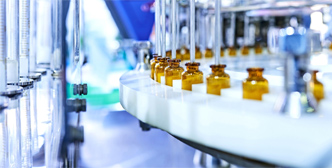 Pharmaceutical Chemical IndustriesDrug Discovery and Development - Centrifuges play a crucial role in drug research and development, such as the separation of drug candidates, formulation development, and drug delivery systems. Industrial Separations - They are used in various chemical processes, including the separation of mixtures, clarification of liquids, and purification of chemicals.
Pharmaceutical Chemical IndustriesDrug Discovery and Development - Centrifuges play a crucial role in drug research and development, such as the separation of drug candidates, formulation development, and drug delivery systems. Industrial Separations - They are used in various chemical processes, including the separation of mixtures, clarification of liquids, and purification of chemicals. -
 Environmental and ResearchEnvironmental Analysis - Centrifuges aid in the analysis of environmental samples, such as water, soil, and air particles, for research, pollution monitoring, and quality control purposes. DNA and RNA Extraction - They are utilized in molecular biology research to extract and purify nucleic acids from biological samples, facilitating genetic studies and diagnostics.
Environmental and ResearchEnvironmental Analysis - Centrifuges aid in the analysis of environmental samples, such as water, soil, and air particles, for research, pollution monitoring, and quality control purposes. DNA and RNA Extraction - They are utilized in molecular biology research to extract and purify nucleic acids from biological samples, facilitating genetic studies and diagnostics.
-
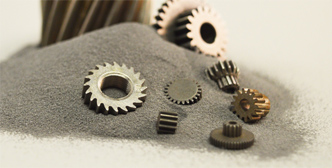 Material Science and ResearchSample Preparation - Muffle furnaces are used for heat treatment processes such as annealing, sintering, and calcination to prepare samples for material characterization, phase transformations, or structural analysis. Powder Metallurgy - They aid in the production of metal and ceramic powders, including processes like powder sintering, debinding, and metal-ceramic composites fabrication.
Material Science and ResearchSample Preparation - Muffle furnaces are used for heat treatment processes such as annealing, sintering, and calcination to prepare samples for material characterization, phase transformations, or structural analysis. Powder Metallurgy - They aid in the production of metal and ceramic powders, including processes like powder sintering, debinding, and metal-ceramic composites fabrication. -
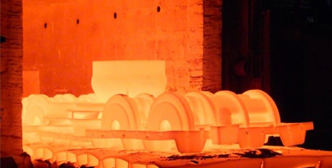 Industrial and ManufacturingHeat Treatment - Muffle furnaces are employed for various heat treatment processes in industries, including tempering, hardening, and stress relieving of metal components to enhance their mechanical properties. Glass and Ceramics Production - They are used for glass melting, glass annealing, ceramic firing, and other processes involved in the production of glassware, ceramics, refractories, and related products.
Industrial and ManufacturingHeat Treatment - Muffle furnaces are employed for various heat treatment processes in industries, including tempering, hardening, and stress relieving of metal components to enhance their mechanical properties. Glass and Ceramics Production - They are used for glass melting, glass annealing, ceramic firing, and other processes involved in the production of glassware, ceramics, refractories, and related products. -
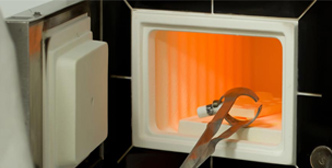 Quality Control and TestingAshing and Residue Analysis - Muffle furnaces aid in determining the amount of ash and organic/inorganic residues in samples, often used in environmental analysis, food testing, and material purity assessment. Loss on Ignition (LOI) Testing - They are employed to measure the percentage of volatile components, such as water and volatile organics, in various materials, including minerals, soils, and polymers.
Quality Control and TestingAshing and Residue Analysis - Muffle furnaces aid in determining the amount of ash and organic/inorganic residues in samples, often used in environmental analysis, food testing, and material purity assessment. Loss on Ignition (LOI) Testing - They are employed to measure the percentage of volatile components, such as water and volatile organics, in various materials, including minerals, soils, and polymers. -
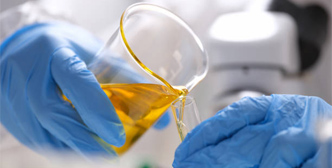 Laboratory Composition FacilitiesOrganic and Inorganic Chemistry - Muffle furnaces are used for various chemical reactions, including organic synthesis, catalyst preparation, and thermal decomposition of compounds. Gravimetric Analysis - They assist in quantitative analysis techniques that involve precise measurement of mass changes during thermal processes, such as determination of moisture content or volatile components.
Laboratory Composition FacilitiesOrganic and Inorganic Chemistry - Muffle furnaces are used for various chemical reactions, including organic synthesis, catalyst preparation, and thermal decomposition of compounds. Gravimetric Analysis - They assist in quantitative analysis techniques that involve precise measurement of mass changes during thermal processes, such as determination of moisture content or volatile components.
-
 Research and DevelopmentSample Preparation - Drying ovens are used to remove moisture from samples before conducting experiments or analysis, ensuring accurate measurements and consistent results. Material Testing - They aid in the drying of materials for testing purposes, such as evaluating the moisture content of construction materials, textiles, or polymers.
Research and DevelopmentSample Preparation - Drying ovens are used to remove moisture from samples before conducting experiments or analysis, ensuring accurate measurements and consistent results. Material Testing - They aid in the drying of materials for testing purposes, such as evaluating the moisture content of construction materials, textiles, or polymers. -
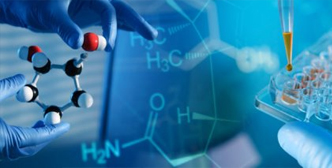 Biotechnology PharmaceuticalDrug Formulation - Drying ovens are employed for drying pharmaceutical formulations, including granules, powders, and tablets, to ensure proper stability and shelf life. Sterilization - They are used for the drying and sterilization of glassware, equipment, and packaging materials in pharmaceutical production, maintaining aseptic conditions.
Biotechnology PharmaceuticalDrug Formulation - Drying ovens are employed for drying pharmaceutical formulations, including granules, powders, and tablets, to ensure proper stability and shelf life. Sterilization - They are used for the drying and sterilization of glassware, equipment, and packaging materials in pharmaceutical production, maintaining aseptic conditions. -
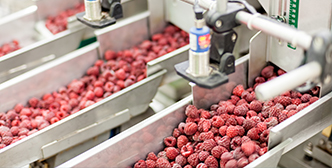 Food and Beverage ProcessingFood Dehydration - Drying ovens play a crucial role in the dehydration of fruits, vegetables, herbs, and other food products, preserving their flavor, texture, and nutritional value. Baking and Cooking - They aid in the baking and cooking of various food items, such as bread, pastries, and snacks, by providing controlled heat and moisture removal.
Food and Beverage ProcessingFood Dehydration - Drying ovens play a crucial role in the dehydration of fruits, vegetables, herbs, and other food products, preserving their flavor, texture, and nutritional value. Baking and Cooking - They aid in the baking and cooking of various food items, such as bread, pastries, and snacks, by providing controlled heat and moisture removal. -
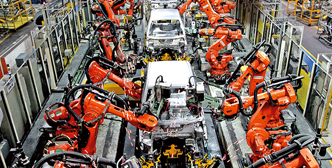 Industrial ApplicationsMoisture Removal - Drying ovens are utilized for the removal of moisture from industrial products and components, such as electronic components, ceramics, or metal parts, to prevent corrosion and ensure quality. Paint Drying - Drying ovens are used to accelerate the drying and curing of paint films on various surfaces, such as automotive parts, metal components, and furniture.
Industrial ApplicationsMoisture Removal - Drying ovens are utilized for the removal of moisture from industrial products and components, such as electronic components, ceramics, or metal parts, to prevent corrosion and ensure quality. Paint Drying - Drying ovens are used to accelerate the drying and curing of paint films on various surfaces, such as automotive parts, metal components, and furniture. -
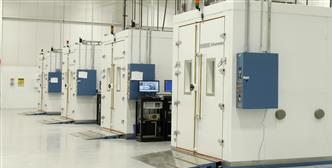 Environmental TestingMaterial Conditioning - Drying ovens are used to condition materials for environmental testing, such as drying soil samples before analyzing their properties. Temperature Exposure Testing - They aid in exposing materials to specific temperature conditions for thermal testing, stability assessment, and performance evaluation.
Environmental TestingMaterial Conditioning - Drying ovens are used to condition materials for environmental testing, such as drying soil samples before analyzing their properties. Temperature Exposure Testing - They aid in exposing materials to specific temperature conditions for thermal testing, stability assessment, and performance evaluation. -
 Textile and Apparel IndustryFabric Pre-treatment - Drying ovens are employed for drying textiles after dyeing, printing, or washing processes, ensuring consistent quality and colorfastness. Heat Setting - They assist in heat-setting processes to enhance the dimensional stability and shape retention of fabrics and garments.
Textile and Apparel IndustryFabric Pre-treatment - Drying ovens are employed for drying textiles after dyeing, printing, or washing processes, ensuring consistent quality and colorfastness. Heat Setting - They assist in heat-setting processes to enhance the dimensional stability and shape retention of fabrics and garments.
-
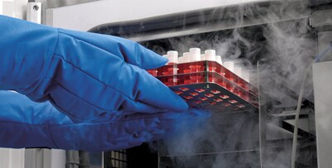 Biomedical Research and StoragePreservation of Biological Samples - Low-temperature freezers are used to store various biological samples, including cells, tissues, DNA/RNA samples, and antibodies, preserving their viability and integrity for research and diagnostic purposes. Vaccine and Drug Storage - They are employed for the long-term storage of vaccines, drugs, and other biologics, maintaining their stability and potency.
Biomedical Research and StoragePreservation of Biological Samples - Low-temperature freezers are used to store various biological samples, including cells, tissues, DNA/RNA samples, and antibodies, preserving their viability and integrity for research and diagnostic purposes. Vaccine and Drug Storage - They are employed for the long-term storage of vaccines, drugs, and other biologics, maintaining their stability and potency. -
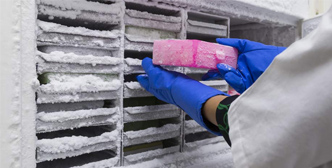 Pharmaceutical and BiotechnologyStorage of Temperature-Sensitive Materials - Low-temperature freezers play a critical role in storing temperature-sensitive materials, such as enzymes, reagents, and clinical trial samples, ensuring their stability and prolonging shelf life. Cryopreservation - They are used for cryopreservation of stem cells, embryos, and other biological materials by reaching ultra-low temperatures, allowing for long-term storage and future use.
Pharmaceutical and BiotechnologyStorage of Temperature-Sensitive Materials - Low-temperature freezers play a critical role in storing temperature-sensitive materials, such as enzymes, reagents, and clinical trial samples, ensuring their stability and prolonging shelf life. Cryopreservation - They are used for cryopreservation of stem cells, embryos, and other biological materials by reaching ultra-low temperatures, allowing for long-term storage and future use. -
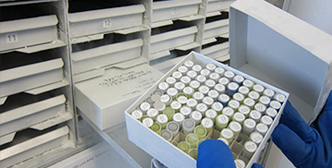 Clinical Laboratories and HospitalsStorage of Medical Samples - Low-temperature freezers aid in the storage of medical samples, including blood plasma, serum, urine, and tissue samples, for diagnostic testing and research purposes. Organ and Tissue Storage - They are utilized in organ transplant facilities for the storage of donated organs, maintaining their viability until transplantation.
Clinical Laboratories and HospitalsStorage of Medical Samples - Low-temperature freezers aid in the storage of medical samples, including blood plasma, serum, urine, and tissue samples, for diagnostic testing and research purposes. Organ and Tissue Storage - They are utilized in organ transplant facilities for the storage of donated organs, maintaining their viability until transplantation. -
 Industrial StorageChemical Storage - Low-temperature freezers are employed for storing temperature-sensitive chemicals, such as reference standards, solvents, and reagents, ensuring their stability and preventing degradation. Food Industry - They are used in the food industry for the preservation and storage of perishable food items, including frozen foods, ice creams, and specialty ingredients.
Industrial StorageChemical Storage - Low-temperature freezers are employed for storing temperature-sensitive chemicals, such as reference standards, solvents, and reagents, ensuring their stability and preventing degradation. Food Industry - They are used in the food industry for the preservation and storage of perishable food items, including frozen foods, ice creams, and specialty ingredients.
-
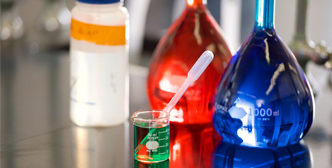 Chemistry and BiochemistryChemical Analysis - Spectrophotometers are used for quantitative analysis of chemical substances, such as determining the concentration of a particular compound in a solution or measuring reaction rates. Biomolecular Analysis - They enable the measurement of biomolecules, including proteins, nucleic acids, and enzymes, for applications like DNA quantification, protein assays, and enzyme kinetics.
Chemistry and BiochemistryChemical Analysis - Spectrophotometers are used for quantitative analysis of chemical substances, such as determining the concentration of a particular compound in a solution or measuring reaction rates. Biomolecular Analysis - They enable the measurement of biomolecules, including proteins, nucleic acids, and enzymes, for applications like DNA quantification, protein assays, and enzyme kinetics. -
 Pharmaceutical and Drug DevelopmentDrug Formulation and Quality Control - Spectrophotometers are used in pharmaceutical laboratories for the analysis of drug formulations, including assessing drug stability, impurity detection, and quality control during production processes. Pharmacokinetics and Bioavailability - They aid in studying the absorption, distribution, metabolism, and excretion of drugs, as well as determining drug bioavailability and pharmacokinetic parameters.
Pharmaceutical and Drug DevelopmentDrug Formulation and Quality Control - Spectrophotometers are used in pharmaceutical laboratories for the analysis of drug formulations, including assessing drug stability, impurity detection, and quality control during production processes. Pharmacokinetics and Bioavailability - They aid in studying the absorption, distribution, metabolism, and excretion of drugs, as well as determining drug bioavailability and pharmacokinetic parameters. -
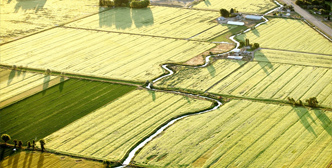 Environmental and Agricultural SciencesEnvironmental Monitoring - Spectrophotometers are employed for water quality analysis, measuring parameters such as chemical oxygen demand (COD), nitrate levels, and heavy metal concentrations. Agricultural Analysis - They assist in agricultural research, including determining nutrient content in soil and plant samples, analyzing pesticide residues, and assessing the quality of agricultural products
Environmental and Agricultural SciencesEnvironmental Monitoring - Spectrophotometers are employed for water quality analysis, measuring parameters such as chemical oxygen demand (COD), nitrate levels, and heavy metal concentrations. Agricultural Analysis - They assist in agricultural research, including determining nutrient content in soil and plant samples, analyzing pesticide residues, and assessing the quality of agricultural products -
 Material Science and ColorimetryMaterial Characterization - Spectrophotometers are used to analyze and characterize the optical properties of materials, such as reflectance, transmittance, and absorption spectra, aiding in material identification and quality control. Color Measurement - They enable precise color analysis and measurement in industries like textiles, paints, cosmetics, and food, ensuring consistent color reproduction and quality
Material Science and ColorimetryMaterial Characterization - Spectrophotometers are used to analyze and characterize the optical properties of materials, such as reflectance, transmittance, and absorption spectra, aiding in material identification and quality control. Color Measurement - They enable precise color analysis and measurement in industries like textiles, paints, cosmetics, and food, ensuring consistent color reproduction and quality
-
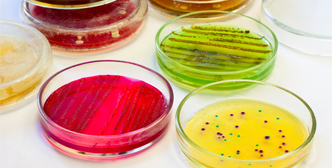 Microbiology and Cell CultureBacterial Cultivation - Incubator shakers are used for growing bacterial cultures, allowing researchers to study bacterial growth, metabolism, and behavior under controlled conditions. Cell Culture and Tissue Engineering - They provide a controlled environment for the growth and maintenance of mammalian cells and tissues, facilitating cell-based research, drug development, and tissue engineering experiments.
Microbiology and Cell CultureBacterial Cultivation - Incubator shakers are used for growing bacterial cultures, allowing researchers to study bacterial growth, metabolism, and behavior under controlled conditions. Cell Culture and Tissue Engineering - They provide a controlled environment for the growth and maintenance of mammalian cells and tissues, facilitating cell-based research, drug development, and tissue engineering experiments. -
 Biochemical and Enzyme ResearchProtein Expression and Purification - Incubator shakers are utilized for protein expression in bacterial or yeast cultures, as well as for protein purification processes such as affinity chromatography or protein crystallization. Enzyme Kinetics and Assays - They provide a controlled environment for studying enzyme kinetics, conducting enzymatic assays, and optimizing reaction conditions.
Biochemical and Enzyme ResearchProtein Expression and Purification - Incubator shakers are utilized for protein expression in bacterial or yeast cultures, as well as for protein purification processes such as affinity chromatography or protein crystallization. Enzyme Kinetics and Assays - They provide a controlled environment for studying enzyme kinetics, conducting enzymatic assays, and optimizing reaction conditions. -
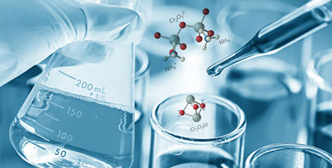 Chemical and Pharmaceutical ResearchChemical Synthesis - Incubator shakers aid in chemical reactions that require temperature-controlled and agitated conditions, such as organic synthesis, peptide synthesis, or polymerization processes. Fermentation and Bioprocessing - They are used for microbial fermentation processes, including the production of biofuels, antibiotics, enzymes, and other biotechnological products.
Chemical and Pharmaceutical ResearchChemical Synthesis - Incubator shakers aid in chemical reactions that require temperature-controlled and agitated conditions, such as organic synthesis, peptide synthesis, or polymerization processes. Fermentation and Bioprocessing - They are used for microbial fermentation processes, including the production of biofuels, antibiotics, enzymes, and other biotechnological products. -
 Molecular Biology and GeneticsDNA/RNA Amplification - Incubator shakers are essential for techniques like polymerase chain reaction (PCR) and reverse transcription polymerase chain reaction (RT-PCR), enabling DNA and RNA amplification and analysis. Hybridization and Blotting - They facilitate nucleic acid hybridization processes, including Southern, Northern, and Western blotting techniques, for studying gene expression and DNA/RNA detection.
Molecular Biology and GeneticsDNA/RNA Amplification - Incubator shakers are essential for techniques like polymerase chain reaction (PCR) and reverse transcription polymerase chain reaction (RT-PCR), enabling DNA and RNA amplification and analysis. Hybridization and Blotting - They facilitate nucleic acid hybridization processes, including Southern, Northern, and Western blotting techniques, for studying gene expression and DNA/RNA detection.
-
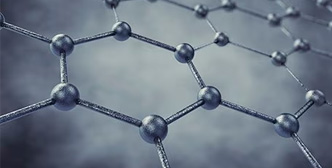 Materials AnalysisChemical Composition Analysis - Raman spectrometers are used to identify and analyze the chemical composition of various materials, including polymers, minerals, catalysts, and nanoparticles. Crystallography - They aid in the identification and characterization of crystalline structures, providing valuable information about crystal orientation, lattice vibrations, and molecular arrangements.
Materials AnalysisChemical Composition Analysis - Raman spectrometers are used to identify and analyze the chemical composition of various materials, including polymers, minerals, catalysts, and nanoparticles. Crystallography - They aid in the identification and characterization of crystalline structures, providing valuable information about crystal orientation, lattice vibrations, and molecular arrangements. -
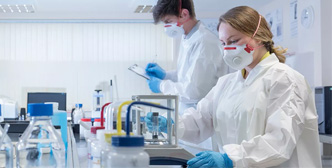 Pharmaceutical and Biomedical ResearchDrug Development and Quality Control - Raman spectrometers are employed in pharmaceutical research for analyzing drug formulations, monitoring drug stability, and detecting impurities or counterfeit drugs. Biomolecular Analysis - They are used for studying biomolecules, such as proteins, nucleic acids, and lipids, providing insights into their structure, conformational changes, and interactions.
Pharmaceutical and Biomedical ResearchDrug Development and Quality Control - Raman spectrometers are employed in pharmaceutical research for analyzing drug formulations, monitoring drug stability, and detecting impurities or counterfeit drugs. Biomolecular Analysis - They are used for studying biomolecules, such as proteins, nucleic acids, and lipids, providing insights into their structure, conformational changes, and interactions. -
 Forensic IdentificationEvidence Examination - Raman spectrometers are utilized for the analysis of forensic evidence, including drugs, fibers, paints, and gunshot residues, aiding in the identification and comparison of materials. Document Authentication - They aid in detecting counterfeit documents, such as passports and banknotes, by analyzing the chemical composition of inks, paper, and security features.
Forensic IdentificationEvidence Examination - Raman spectrometers are utilized for the analysis of forensic evidence, including drugs, fibers, paints, and gunshot residues, aiding in the identification and comparison of materials. Document Authentication - They aid in detecting counterfeit documents, such as passports and banknotes, by analyzing the chemical composition of inks, paper, and security features. -
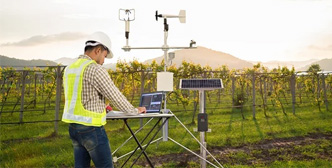 Environmental Monitoring and AnalysisPollution Monitoring - Raman spectrometers are used for the identification and quantification of pollutants, such as airborne particles, organic compounds, and microplastics, in air, water, and soil samples. Environmental Analysis - They aid in studying geological materials, analyzing pollutants in sediments, monitoring the degradation of artworks, and studying atmospheric chemistry.
Environmental Monitoring and AnalysisPollution Monitoring - Raman spectrometers are used for the identification and quantification of pollutants, such as airborne particles, organic compounds, and microplastics, in air, water, and soil samples. Environmental Analysis - They aid in studying geological materials, analyzing pollutants in sediments, monitoring the degradation of artworks, and studying atmospheric chemistry. -
 Narcotics Hazardous Chemical DetectionDrug detection - Help the police and customs conduct drug (heroin, fentanyl, morphine, etc.) inspection of suspicious items on site. Hazardous chemical detection - It can be used for hazardous chemical detection at the entrances of high-speed railways, subways, and BRT.
Narcotics Hazardous Chemical DetectionDrug detection - Help the police and customs conduct drug (heroin, fentanyl, morphine, etc.) inspection of suspicious items on site. Hazardous chemical detection - It can be used for hazardous chemical detection at the entrances of high-speed railways, subways, and BRT. -
 Agricultural Monitoring and Food SafetyAgricultural testing - It can be used to analyze the nutrient content and organic matter in the soil, and can also be used to detect pathogens on plant leaves, roots or fruits to help farmers take control measures. Food testing - It can be used to quickly detect and identify additives, pesticide residues, veterinary drug residues, also verify the authenticity of high-end food and beverages etc. in food.
Agricultural Monitoring and Food SafetyAgricultural testing - It can be used to analyze the nutrient content and organic matter in the soil, and can also be used to detect pathogens on plant leaves, roots or fruits to help farmers take control measures. Food testing - It can be used to quickly detect and identify additives, pesticide residues, veterinary drug residues, also verify the authenticity of high-end food and beverages etc. in food. -
 Gem Identification and Mineral ScreeningGem Identification - It can accurately identify inclusions in gems, provide gem origin and origin information, and can effectively, quickly, non-destructively and accurately identify natural gems, synthetic gems and optimized gem types. Mineral Screening -quickly identify rocks and analyze rock composition, helping geologists analyze the formation process of minerals and rocks.
Gem Identification and Mineral ScreeningGem Identification - It can accurately identify inclusions in gems, provide gem origin and origin information, and can effectively, quickly, non-destructively and accurately identify natural gems, synthetic gems and optimized gem types. Mineral Screening -quickly identify rocks and analyze rock composition, helping geologists analyze the formation process of minerals and rocks. -
 Art and ArchaeologyCultural Heritage Preservation - Raman spectrometers are employed for the non-destructive analysis of artwork, artifacts, and historical materials, assisting in material identification, authentication, and preservation. Pigment Analysis - They aid in the identification and characterization of pigments used in paintings, ceramics, and cultural artifacts, revealing insights into artistic techniques and historical contexts.
Art and ArchaeologyCultural Heritage Preservation - Raman spectrometers are employed for the non-destructive analysis of artwork, artifacts, and historical materials, assisting in material identification, authentication, and preservation. Pigment Analysis - They aid in the identification and characterization of pigments used in paintings, ceramics, and cultural artifacts, revealing insights into artistic techniques and historical contexts.
-
 Alloy and Metals AnalysisAlloy Composition - XRF spectrometers are used to analyze the elemental composition of alloys, including metals, ensuring material quality and consistency in manufacturing. Waste metals recycling and reuse - makeon-site detection and rapid classificationof scrap metals, rocycle overstockadsteel, turringscraps and cuttings in the warehouse.
Alloy and Metals AnalysisAlloy Composition - XRF spectrometers are used to analyze the elemental composition of alloys, including metals, ensuring material quality and consistency in manufacturing. Waste metals recycling and reuse - makeon-site detection and rapid classificationof scrap metals, rocycle overstockadsteel, turringscraps and cuttings in the warehouse. -
 Environmental Monitoring and AnalysisSoil and Sediment Analysis - XRF spectrometers enable rapid assessment of soil and sediment contamination by analyzing heavy metal content, aiding in environmental monitoring. Air Quality Studies - They assist in analyzing air particulates for elements and pollutants, contributing to studies on air quality and pollution sources.
Environmental Monitoring and AnalysisSoil and Sediment Analysis - XRF spectrometers enable rapid assessment of soil and sediment contamination by analyzing heavy metal content, aiding in environmental monitoring. Air Quality Studies - They assist in analyzing air particulates for elements and pollutants, contributing to studies on air quality and pollution sources. -
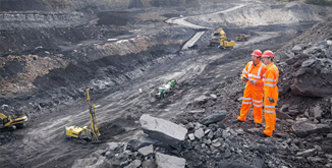 Mining and ExplorationOre Grade Analysis - XRF spectrometers are used for on-site ore grade analysis, aiding in mineral exploration and ore processing optimization. Core Sample Analysis - They assist in analyzing core samples from drilling operations, providing information about the composition of subsurface materials.
Mining and ExplorationOre Grade Analysis - XRF spectrometers are used for on-site ore grade analysis, aiding in mineral exploration and ore processing optimization. Core Sample Analysis - They assist in analyzing core samples from drilling operations, providing information about the composition of subsurface materials. -
 Geological Archaeological ResearchGeological Studies - They aid in analyzing rocks, minerals, and soils for their elemental content, assisting in geological exploration and resource assessment. Archaeological Investigations - XRF is used to determine the composition of artifacts, helping archaeologists identify the origins and history of objects.
Geological Archaeological ResearchGeological Studies - They aid in analyzing rocks, minerals, and soils for their elemental content, assisting in geological exploration and resource assessment. Archaeological Investigations - XRF is used to determine the composition of artifacts, helping archaeologists identify the origins and history of objects. -
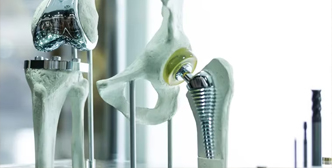 Pharmaceuticals Medical ResearchElemental Analysis - XRF is used for the analysis of pharmaceuticals, ensuring the absence of heavy metal contaminants and assessing elemental impurities. Medical Device Testing - XRF spectrometers aid in analyzing medical implants and devices for their elemental composition and safety.
Pharmaceuticals Medical ResearchElemental Analysis - XRF is used for the analysis of pharmaceuticals, ensuring the absence of heavy metal contaminants and assessing elemental impurities. Medical Device Testing - XRF spectrometers aid in analyzing medical implants and devices for their elemental composition and safety. -
 Quality Control ProcessesConsumer Goods Testing - XRF spectrometers verify the elemental composition of consumer products such as toys, electronics, and textiles, ensuring compliance with safety regulations. Cement and Building Materials - They assist in the quality control of construction materials by analyzing the elemental composition of cement, concrete, and ceramics.
Quality Control ProcessesConsumer Goods Testing - XRF spectrometers verify the elemental composition of consumer products such as toys, electronics, and textiles, ensuring compliance with safety regulations. Cement and Building Materials - They assist in the quality control of construction materials by analyzing the elemental composition of cement, concrete, and ceramics. -
 Art Conservation and AuthenticationArtwork Analysis - XRF is used to analyze pigments, inks, and materials in artworks, aiding in restoration, authentication, and understanding artist techniques. Historical Artifact Studies - They contribute to the analysis of historical artifacts and cultural heritage objects to determine their elemental composition and origin.
Art Conservation and AuthenticationArtwork Analysis - XRF is used to analyze pigments, inks, and materials in artworks, aiding in restoration, authentication, and understanding artist techniques. Historical Artifact Studies - They contribute to the analysis of historical artifacts and cultural heritage objects to determine their elemental composition and origin.